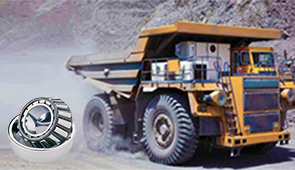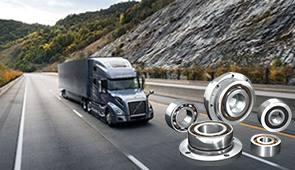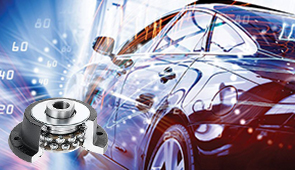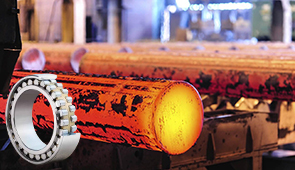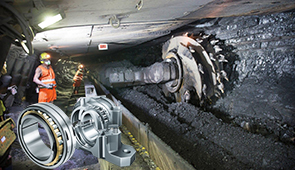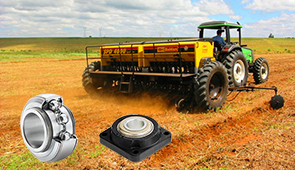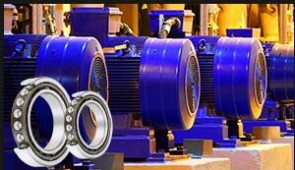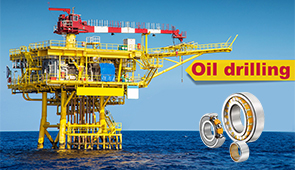Engine Oil Seals: Understanding the Importance of Oil Seals, Shaft Seals, and Gaskets
Sealing is a very critical point, yet it is very often neglected. Several kinds of sealing systems reside under this category: oil seals, shaft seals, and gaskets. These meticulously engineered components are of utmost importance in keeping an engine operational by not allowing leakage of fluids, keeping lubrication inside, and preventing contamination from dust and dirt. Without maintaining the seals, even the mightiest engine designs could face premature failure, loss of efficiency, and costly repairs. The article goes in-depth into the important functions of oil seals, shaft seals, and gaskets, and explains their importance, working principles, construction materials, and technologies. Whether you are a pro engineer, vehicle enthusiast, or merely wondering about what’s under your hood, this article is a complete package for understanding these components.
Purpose and Functionality of Engine Oil Seals
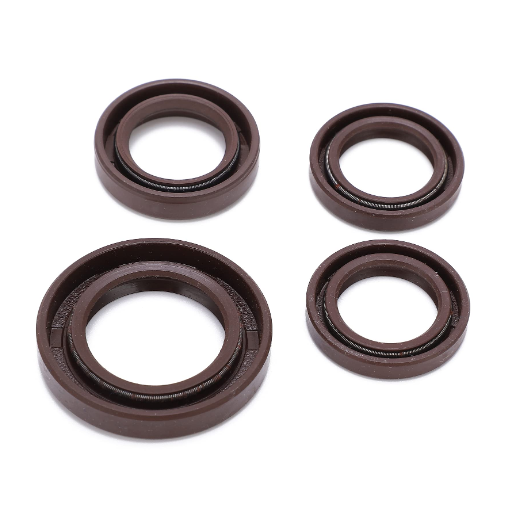
How Oil Seals Prevent Oil Leaks
Oil seals, also referred to as rotary shaft seals, are central to preventing oil leaks inside engines or other mechanical equipment. Their main function is to provide a barrier to internal and external areas of any given part, mostly at the rotating shafts, so that lubricants can be retained in their assigned areas. While preventing oils from escaping, these seals maintain proper lubrication for moving parts that must reduce wear for a long period.
Oil seals are effective due to the nature of their construction and the precise fit. Generally, it has three main parts-making: the sealing lip, the metal case, and the spring. The sealing lip is held against the shaft by the spring to provide the force necessary for tight sealing. The spring is a steel wire element that provides radial force to the sealing lip to maintain the seal under varying load conditions. The rubber elastomer for the lip and a resilient spring in the metal case ensure the sealing performance even in variable pressure, temperature, and very dynamic conditions.
Oil seals also function to block foreign particles like dirt, dust, or even moisture that can cause internal damage. Hence, acting both to seal oil and to keep pollution outside, oil seals maintain machinery upkeep, reduce maintenance procedures, and overall enhance system efficiency. Proper installation, along with considering the operating conditions, is crucial for oil seals’ utmost functionality and to avoid any conditions that might bring about failure.
Protecting Engine Components with Shaft Seals
To protect vital parts of the engine, shaft seals prevent fluid leakage and block contaminants from entering the sensitive areas. These seals are essentially set around rotating shafts to protect the spaces inside. This includes allowing for lubricants, such as oil, to stay inside their designated chambers while not letting in harmful debris like dirt, dust, or moisture. Performance enhancement and life extension of engine parts become possible as they reduce wear and tear caused by contamination or lubricant losses.
However, for best results, the seals must be selected and installed depending on the operating conditions of the engine they will serve. Consider temperature ranges, pressure levels, and the type of lubricant being used. If the wrong seal is selected, it will deteriorate. The result is worse wear, extra friction, and possible system failure. High-performance seals are designed to withstand being subjected to extreme heat and chemicals and continue to work well. These materials include things such as nitrile rubber or fluorocarbon.
Maintenance and inspection are equally imperative for checking the condition of shaft seals to ensure that they perform well. They tend to break down due to friction, aging, and environmental conditions, subsequently jeopardizing the seal’s integrity either through leakage or allowing contaminants inside. Operators are able to lessen such risks by regularly inspecting for any seal damage, such as before cracks could form or become bigger, loss of flexibility, and the seepage of fluid around the seal. On-site replacement of defective and worn seals will ensure the protection of engine components and, consequently, the efficiency and reliability of the system through time.
The Role of Gaskets in Engine Oil Sealing
Gaskets seal surfaces and are vital for engine oil sealing systems. They form a secure barrier between mating surfaces so that nothing leaks out and contaminants cannot enter inside of the engine. Gaskets, when appropriately designed and installed, must always refer to the core of modern engineered concepts regarding the conservation of efficiency, life, and dependability. Below is a list focusing on five aspects describing gasket-related engine oil sealing considerations:
- Structural Durability: Gaskets are made from rubber, metal, or composite material capable of withstanding very high temperatures and pressures within the engine, thereby avoiding any form of deformation and ensuring good sealing in the long term through operating conditions.
- Thermal Resistance: Usually, engine conditions require temperatures to rise above 200°F (93°C), sometimes much higher, and a gasket must withstand such thermal conditions without any deterioration to maintain its service integrity through hours of engine operation.
- Chemical Resistance: Gaskets need to remain resistant to various kinds of engine oils, additives, and other fluids. This prevents corrosion or degradation of a gasket material when exposed to these substances for a long time, and the material gains its ability to maintain a seal.
- Compression and Flexibility: A gasket must compress between the uneven surfaces of opposing engine components yet remain sufficiently flexible to respond to vibrations, pressure changes, or thermal expansion without failure of the seal.
- Leakage Prevention: The primary function of the gasket is to prevent the outflow of oil at junctions such as cylinder heads, oil pans, and valve covers so that the engine oil may be contained for lubrication and prevention of overheating or damage to components.
Addressing these factors ensures that the gaskets provide operational efficiency and reliability to the engine oil systems, which reduces maintenance costs and enhances engine life. High-quality gaskets used in conjunction with recommended installation procedures warrant the best engine performance.
Common Types of Oil Seals and Their Applications
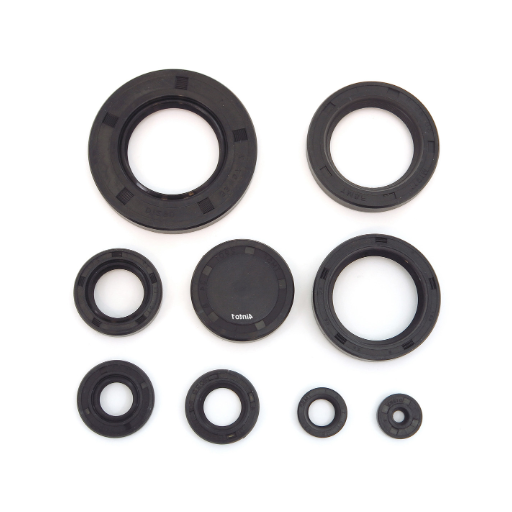
Overview of Oil Seal Sizes and Specifications
Oil seals or shaft seals are manufactured in many sizes and specifications to satisfy the diverse needs of mechanical systems. These dimensions will primarily depend on shaft size, bore size, and seal width. Sometimes, standardized sizing such as prescribed by ISO or DIN specifications would be commonly used to ensure application and machinery compatibility.
Oil seals are marked so that a person can select a seal of the right size for the shaft and housing to prevent leakage or unwanted performance. For example, an oil seal marked “50x80x10” stands 50 mm in internal diameter, 80 mm in external diameter, and 10 mm in thickness.
Further to basic sizing, oil seal specifications embrace material construction, design features such as single or double lips, and the means to retain the spring. The most commonly used materials include nitrile rubber (NBR), fluoroelastomers, and polytetrafluoroethylene (PTFE), with varying levels of heat, chemical, and wear resistance. Usually, the selection is based on the working environment: quite hot, exposed to aggressive chemicals, or subjected to abrasive media.
Advanced designs of oil seals nowadays may incorporate hydrodynamic lip patterns or coated surfaces for superior performance. Such specifications are especially critical when selecting seals for high-precision or high-speed operations encountered in automotive, aerospace, and industrial machinery.
Materials Used in Manufacturing Oil Seals
The material choice for the manufacturing of oil seals is dependent chiefly on the application, operating parameters, and working environment compatibility. More robust materials would ensure durability, wear resistance, and performance even under adverse conditions. The commonly used types of materials are in the list below:
- Nitrile Rubber (NBR): This is the most common type of rubber used owing to its resistance against petroleum-based oils, fuels, and hydraulic oils. It operates best at general-purpose applications and temperatures between -40°F to 257°F (-40°C to 125°C).
- Fluoroelastomer (FKM/Viton): High temperatures provide an upper limit of 392°F (200°C) for this material, while chemicals ranging from synthetic lubricants, oils, and certain types of acids can aggressively act upon this polymer. For automotive and industrial uses where high thermal and chemical stability is a must, it is assigned.
- Silicone (VMQ): Selected due to its wide operational temperature range that varies from as low as -76°F to 446°F (-60°C to 230°C). Silicone is used in applications where it needs to be thermally stable and perform in moderate cleanliness. Typical applications include Aerospace and Refrigeration Systems.
- Polytetrafluoroethylene (PTFE): PTFE works for any track that demands low friction and resistance to harsh chemicals. It can withstand extreme temperatures of -328°F to 500°F (-200°C to 260°C) and is hence used in industries like Pharmaceuticals and Chemical Processing, where the operation involves high speed or highly precise activities.
- Hydrogenated Nitrile Rubber (HNBR): An improved version of NBR, having much better resistance to heat, oil, and ozone, yet retaining its mechanical strength. It is used in temperature elevation and aggressive agent environments.
- Polyurethane: Polyurethane seals are abrasion and tear-resistant and are mostly primed for higher-wear applications such as hydraulic and machine operations.
Modern formulas complement a range of reinforcements like fabric, carbon, or metal inserts, making them dimensionally stable and capable of performing in highly aggressive dynamic conditions. Motor manufacturers are already working on hybrid compounds due to advancements in material science to tackle very specific requirements like biocompatibility or ultra-low friction for modern machinery.
Specific Applications for Different Oil Seal Types
Oil seals serve critical functions across a vast range of industrial and automotive applications, thus being designed according to operational requirements and areas of application. For instance, rotary shaft seals find extensive use in various rotating equipment like pumps, compressors, and gearboxes, whose maintenance centers on lubricant retention and contamination prevention. These seals operate under considerable rotational speeds and are resistant to thermal expansion, thereby helping to maintain long-term efficiency.
On the other hand, axial seals find greater importance in applications involving reciprocating motion, such as hydraulic cylinders and pneumatic actuators. These seals are designed to prevent leakage under varying pressure circumstances and often consist of materials possessing improved properties like fluoroelastomers for heat and chemical resistance.
Double lip oil seals function best in areas where dirt or dust may create problems, or an intermittent spray of fluid comes from places such as off-road equipment and agricultural machinery. The extra sealing lip protects against contaminants, while the main lip continues to execute the sealing function, providing durability even in highly aggressive environments.
Split oil seals are used in major equipment installations where disassembly cannot be contemplated, including turbine units or mining machinery. It ensures easy installation and maintenance without compromising proper sealing. These usually go together with precision-engineered housings, guaranteeing alignment and performance through their entire life cycle.
With technological advancements in sealing, the application of oil seals is continuously expanding and conforming to rigorous standards of industries such as aerospace, medical devices, and renewable energy platforms. Each type of seal is optimized to balance mechanical performance, chemical resistance, and thermal stability as dictated by the specific nature of the challenges of the operating environment.
Signs of Wear and Failure in Oil Seals
Identifying Oil Leakage Issues
Oil leakage is among the most frequently cited symptoms of oil seal failure, often signifying an underlying sealing problem. Improper installation, deterioration of material, excessive pressure, and even contamination in the working environment are some causes. You would often observe the leakage in the form of pools of oil emanating from the sealing vicinity or drips during operation. In the long run, oil leakage aggravates equipment inefficiencies while raising maintenance costs and, in some instances, posing hazards to safety.
Another notable cause of leakage is the abrasion of sealing material occasioned by prolonged exposure to high temperature or being attacked by very abrasive particles received from outside the machinery. On the other hand, sealing may be impaired when shafts are misaligned or have uneven surfaces. Thus, keeping a regular inspection routine and strictly following any maintenance schedule could help identify and arrest the situation early.
With the advent of advanced tools, oil seal wear and leaking could now be diagnosed early with non-invasive techniques, one example being infrared imaging and another being vibration analysis. Both techniques yield very precise data on seal performance, paving the way for predictive maintenance that helps reduce downtime and increase equipment life.
Understanding Decreased Engine Performance
The decrease in engine performance can be attributed to a number of technical issues, each of these being detrimental to the system’s overall operational efficiency. Some of the common problems include the clogging of the air filters, restricting airflow, and upsetting the air-fuel ratio, or possibly degraded spark plugs causing incomplete combustion and thereby less power output. Another aspect limiting the power generation by the engine includes fuel-delivery problems, such as a blocked fuel injector or a faulty fuel pump.
In assisting with the pinpointing of performance-related issues, advanced diagnostics, such as the onboard diagnostic (OBD-II) scanner, serve as crucial equipment for technicians. The systems diagnose error codes relative to specific engine components, resulting in a fine assessment of the trouble areas. For example, a decrease in compression levels across the engine cylinders, usually diagnosed through compression testing, suggests possible wear in piston rings or cylinder walls; exhaust gas analysis indicates imbalances in combustion efficiency that elucidate further issues in fuel mixture control or emissions systems.
Their ability to supply actionable metrics that allow for preventive actions against performance decline relies on the integration of sensor-based monitoring and real-time data acquisition systems in modern engines. These metrics include torque and power output analysis, fuel consumption efficiency, and heat performance ranking. All play a part in establishing a schedule for imminent maintenance.
Maintenance and Replacement Tips for Oil Seals
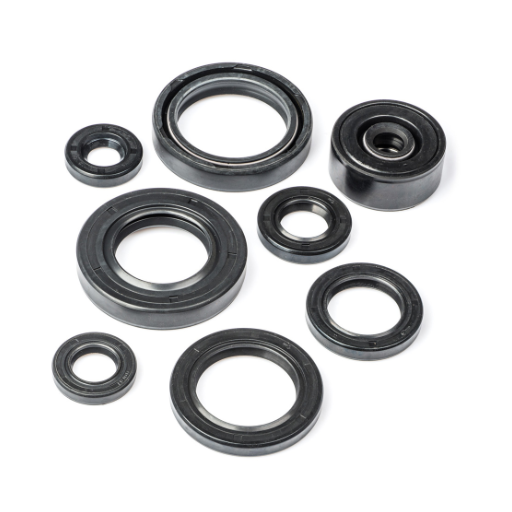
Practical Tips for Fitting an Oil Seal
Improper installation of an oil seal would adversely affect the machinery’s performance and life. The process starts by cleaning the housing bore and the shaft surface of any dirt, contaminants, or remnants of seal that may affect the sealing integrity. Selecting the correct oil seal size and material is very critical; consider the temperature, pressure, and type of fluid that is to be sealed.
Lubricate the oil seal lip and shaft using a lubricant compatible with the given operational conditions so as to prevent any damage during assembly. Check the shaft surface for irregular wear and any burrs that could damage the seal lip or otherwise affect sealing performance before pressing the seal in place.
Apply uniform pressure evenly around the outer edge of the oil seal during installation, preferably using a seal driver, seal press, or installing tool. Do not use any makeshift tool like a screwdriver; such tools could deform or puncture the seal. Place the seal in a properly aligned manner along a straight path; any offset could lead to premature wear and leakage.
Finally, perform a post-installation inspection to check proper fit relative to the flush position in the housing. Repeat the inspection after a short interval of use to catch any initial signs of leakage or improper fit in time for corrective action. Regular monitoring of seal performance and recognition of wear patterns from maintenance will help to ensure major system failure is avoided and component life is extended.
Choosing the Right Oil Seal for Your Vehicle
The choice of the right oil seal is often the difference between a smooth-running vehicle and systemic failure. First, several factors are weighed to match seal specifications with operating conditions. Below is an outline of some important considerations:
- Material Issues: Selection of an appropriate oil seal material will be based on the environment, including temperature ranges, the lubricants to be used, and possible chemical attacks. Nitrile rubber (NBR), for instance, is the most common general-type oil seal because it resists oil and moderately high temperatures, whereas materials based on fluorocarbon (FKM) are used with very high-temperature applications, or under chemically aggressive environments.
- Seal Type and Design: The various oil seal designs suit different applications and include single-lip or double-lip seals. Single-lip seals are best for light-duty applications with little contamination, and double-lip seals have another layer of protection against dirt and debris for use in heavy-duty applications.
- Specifications of Shafts and Bores: The shaft diameter, bore diameter, and width should all be measured very carefully to ensure proper fit of the seal. This also includes correct tolerances, which are sometimes given in the manufacturer’s technical literature. Incorrect sizing of the seal may lead to distortion, leakage, or premature wear.
- Pressure and Speed Limits: Oil seals have certain limits on pressure and shaft speed within which they can operate successfully. In high-speed applications, seal designs with advanced features, for instance, reinforced materials or hydrodynamic aids, are required, while high-pressure systems require lip designs that can seal securely under load.
- Operating Environment: Analyze environment variables such as dust, dirt, hits of water, and temperature extremes. For abrasive conditions, use seals that come with advanced protective features such as radial dust lips or auxiliary sealing elements to cut down on wear and improve sealing performance.
By studying all of the above in detail, along concerning manufacturers’ specifications, the seals that are selected for a vehicle will be totally reliable and well suited to all its operating conditions. To align these seals carefully translates to an efficient vehicle that does not suffer frequent mechanical breakdowns, thus prolonging the life of its essential components.
How to Prevent Damage and Extend Oil Seal Life
A combination of proper maintenance and the right operational procedures is necessary to prevent oil seal damage and to allow it to have an optimized lifespan. Among the primary maintenance procedures is that the seal should operate within the temperature, pressure, and speed limits for which it was designed. The application of any excessive conditions may compromise the material integrity, thereby leading to premature failure. A clean installation is also one of the most underrated procedures related to maintaining an oil seal. Even the smallest of contaminants may cause those minute surface irregularities that allow the fluid to leak or cause very rapid wear. The use of proper tools during installation cannot be overemphasized. Avoid using improper methods, such as hammering, as it can cause the seal to deform.
Periodic inspections coupled with timely replacements are among the proactive maintenance duties that should be carried out. This includes checking signs of hardening, cracking, and excessive wear, all indicators of failure that have the potential to occur. Using manufacturer-recommended lubricants also goes a long way in minimizing friction and heat generation, making sure the service life of a seal is prolonged.
Adjacent parts, such as shafts and housing,s should also be in the best possible condition. Any problem there, such as misalignment, produces uneven stresses on the oil seal, which further accelerates its deterioration. Apart from material qualifications and application-related qualifiers determined from load dynamics and environmental considerations, the use of high-quality materials and design for the production of seals improves durability and performance.
By following these technical considerations, the operators will reduce the chance of seal damage, make operations more efficient, and enhance the practicability of operation over long periods.
Selecting High-Quality Oil Seals
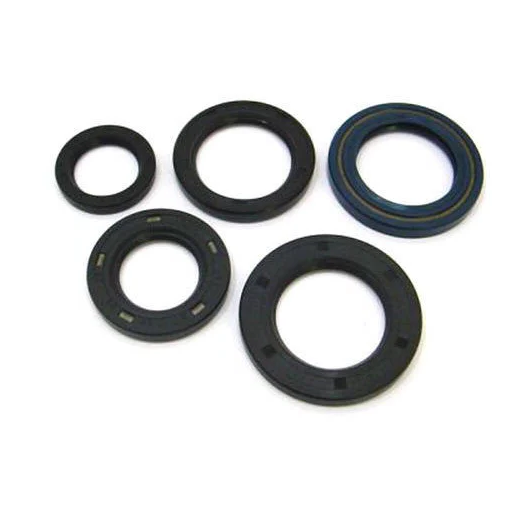
Importance of Choosing Trusted Manufacturers
When selecting oil seals for industrial applications, I ensure the manufacturer is one of repute because only such manufacturers assure the highest quality standards in terms of raw materials and production. Reputed manufacturers manufacture seals by embracing state-of-the-art technology and stringent quality control systems so that they meet or exceed the minimum performance requirements. These aspects put excellence at the forefront of their concerns, and hence, the risk of an early failure is minimized, thus boosting the reliability of the machinery.
Established manufacturers provide critical technical support and tailor solutions based on specific industry needs to maximize system performance. Their leading knowledge of load, pressure ratings, and environmental conditions helps ensure that seals can be rated for ceaseless use in harsh or specialized applications, an outcome that directly benefits operational performance and longevity. The absence of such prerequisite know-how can greatly increase the risk of equipment failure and consequentially costly downtimes.
When selecting manufacturers, I consider supply chain dependability and the availability of authentic replacement parts. Trusted manufacturers usually have reliable distribution networks; thus, sealing and replacement components are insured from being subjected to defects. This, in return, will make lead time shorter and avoid delays in any form of maintenance or repairs. By aligning with a famous manufacturer, emerging trust towards the quality of their products, thus aligning one in enhancing the sustainability of one`s operations.
Understanding the Correct Oil for Your Seals
The choice of oil for the seals is an important consideration in guaranteeing their best performance and longevity. Compatibility of the seal material and the lubricant is essential to prevent premature wear of the seal, chemical degradation, or failure. Different seal materials, such as nitrile rubber (NBR), fluoroelastomers (FKM), or polytetrafluoroethylene (PTFE), are meant to withstand specific chemical compositions and temperatures as posed by oils.
Also, the viscosity of the operational oil must be appropriate for the system. Oils of high viscosity offer good sealing at high pressures. This, however, increases resistance and consumption of power. Oils of low viscosity, on the other hand, have lower friction but may allow leakage in some cases. So, the selection is greatly dependent on the working conditions, synthetic oils being preferred generally in high-temperature or extreme-pressure situations just because of their superior thermal stability and oxidation resistance.
To be on the safe side, one could enlist the help of industry standards such as ASTM, DIN, or ISO specifications highlighting oil and seal compatibility. Selecting custom-made oils for an application is one way of ensuring the chosen lubricant does not hinder the working of the seals but rather helps to increase the operational efficiency and, in turn, extends the lifespan of the whole system with reduced maintenance costs.
Frequently Asked Questions (FAQ)
Q: What are engine oil seals,s and why are they important?
A: They are very important components that stop the leaking of oil in the various parts of an engine. They make sure that the oil is contained within the engine and maintain the oil level and pressure, which is required for the proper operation of the engine.
Q: What are the different types of oil seals?
A: There are several types of oil seals: lip seals, o-rings, grease seals, etc. Each type has its function for different usages, and the one suitable for an environment would be used.
Q: What is the right way to find out if the oil seal size corresponds to my application?
A: For the size of the correct oil seal, the shaft diameter and the housing bore, in which they are to be fixed, have to be measured. It is important for an oil seal to be of the right size so that it can perform its function of leakage prevention and also safeguard the engine.
Q: Will grease work instead of oil with oil seals?
A: Mostly, oil seals are for oils, but in some cases, depending on their design and application, they may also be used with grease. It therefore becomes crucial that you are sure whether the seal is compatible with the lubricant intended, or else you may find it to be leaking or causing damage.
Q: How should an oil seal be installed?
A: The proper installation of an oil seal begins with cleaning the surfaces and making sure there are no sharp points or debris that could damage the seal. Then lubricate the shaft lightly. Ensure that the oil seal is facing the right direction, and after that, press or gently hammer it into the bore with the use of proper tools.
Q: What causes Engine oil seals to fail?
A: They fail because of friction wear, extreme temperatures, contamination by dirt, or even misalignment during installation. Moreover, wrong oil or grease selection may also cause seals to prematurely fail.
Q: How can I prevent oil seals from getting damaged during installation?
A: Be certain that the surfaces are clean, free from sharp points or burrs that could cut or damage the seal during installation. Use the correct tools to install the seal; never force a seal in place, as deformation will cause failure.
Q: What should I do if my oil seal is leaking?
A: Once you confine the source of the leak, a little damage from the seal can be repaired only by replacing the seal and not the whole assembly. Always make use of the right seal for your application after repairing to avoid any further leaks.
Q: What are the common materials for oil seals?
A: Normally, oil seals are rubber or synthetic materials to maintain durability and retain flexibility. The material selection determines variations in seal hardness and its ability to withstand pressure and temperature in various applications.
UCTH213-40J-300 with Setscrew(inch)
CNSORDERNO: Normal-duty(2)
TOGN: UCTH213-40J-300
SDI: B-R1/8
SD: 2 1/2
UCTH212-39J-300 with Setscrew(inch)
CNSORDERNO: Normal-duty(2)
TOGN: UCTH212-39J-300
SDI: B-R1/8
SD: 2 7/16
UCTH212-38J-300 with Setscrew(inch)
CNSORDERNO: Normal-duty(2)
TOGN: UCTH212-38J-300
SDI: B-R1/8
SD: 2 3/8
UCTH212-36J-300 with Setscrew(inch)
CNSORDERNO: Normal-duty(2)
TOGN: UCTH212-36J-300
SDI: B-R1/8
SD: 2 1/4
UCTH211-35J-300 with Setscrew(inch)
CNSORDERNO: Normal-duty(2)
TOGN: UCTH211-35J-300
SDI: B-R1/8
SD: 2 3/16
UCTH211-34J-300 with Setscrew(inch)
CNSORDERNO: Normal-duty(2)
TOGN: UCTH211-34J-300
SDI: B-R1/8
SD: 2 1/8









